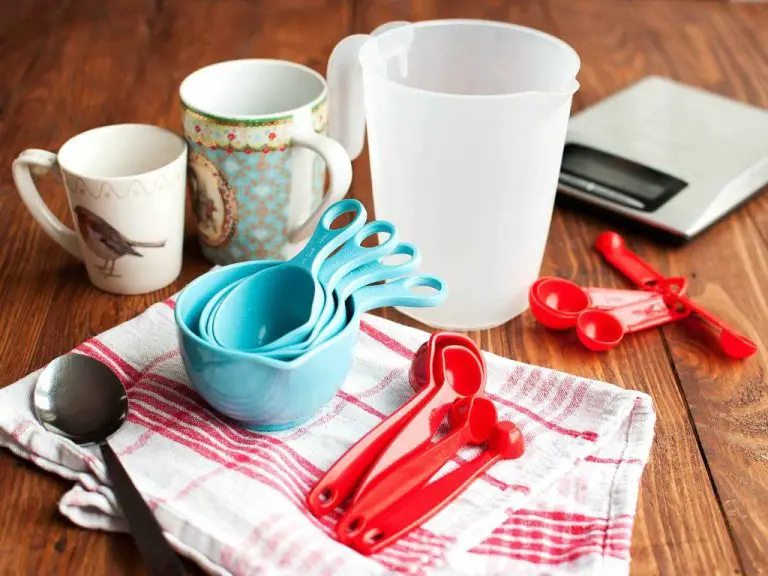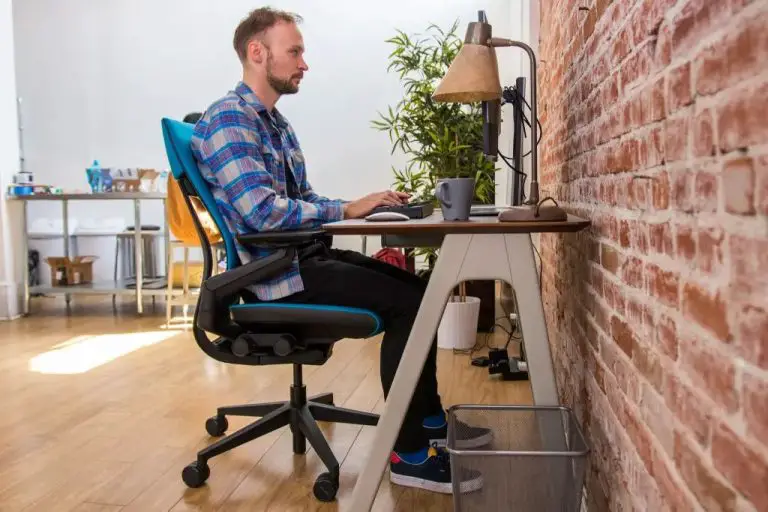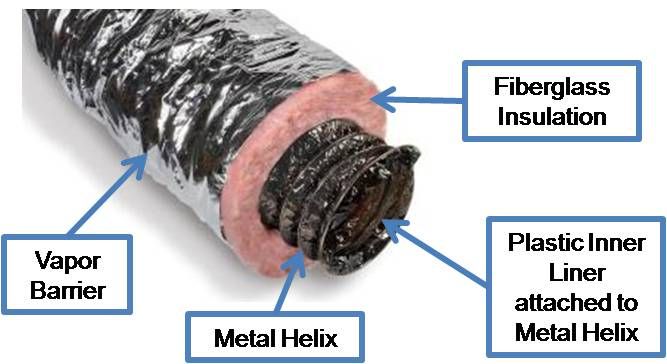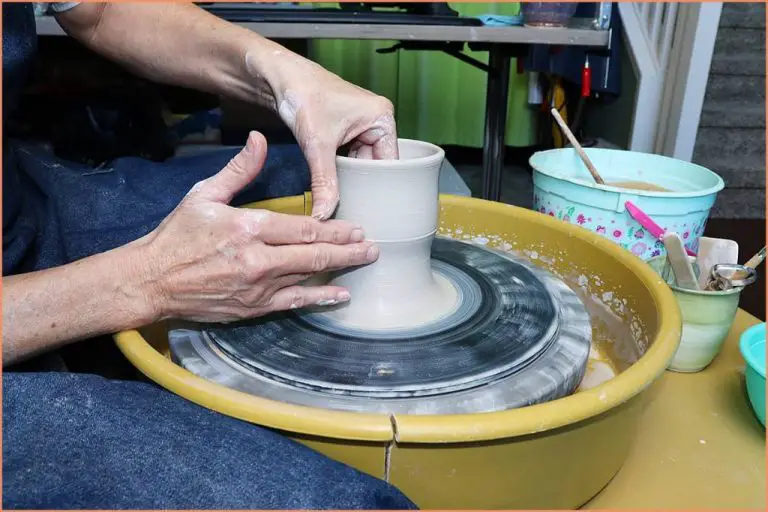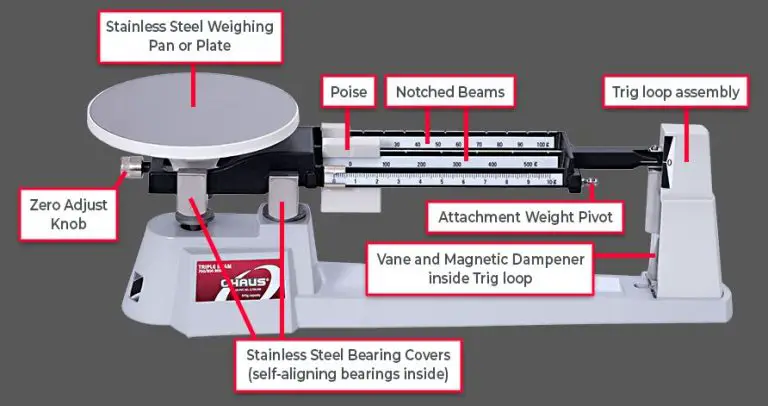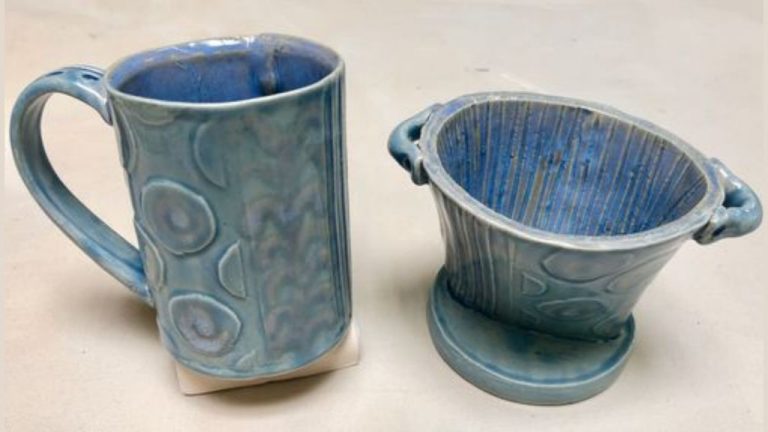What Does A Potter Use To Bake The Clay Utensils?
Pottery refers to objects made from clay and hardened by heat. Clay can be molded into a variety of shapes and sizes to create bowls, plates, cups, vases, and decorative art pieces. After shaping the clay, potters must bake or “fire” the objects at extremely high temperatures in a kiln to permanently harden them.
The pottery baking process involves multiple steps. First, potters shape the raw clay into the desired form using techniques like throwing on a spinning wheel, handbuilding, or molding. Next, the shaped clay is dried slowly to remove excess moisture. In some cases, potters may apply colored glazes or decorations prior to firing. Once ready, the pottery is loaded into a kiln and baked at temperatures usually between 1,800-2,400°F. At these high heats, chemical and physical changes occur that permanently harden and set the clay. After firing, pottery must be cooled in a controlled manner to prevent cracking before being unloaded. With a basic understanding of the pottery baking process stages, we can now examine each step in detail.
Kilns
Kilns are an essential tool for potters to bake and fire their clay creations. There are several types of kilns used in pottery, each with their own advantages. The main types are electric kilns, gas kilns, wood-fired kilns, and raku kilns.
Electric kilns are very common for potters today. They offer excellent control over the firing process and temperature. Electric kilns heat the clay using heating elements and are powered by electricity. They come in a range of sizes from small tabletop kilns to large walk-in kilns.
Gas kilns use natural gas or propane for fuel. Gas kilns can reach very high temperatures and are known for providing beautiful flame effects on pottery. However, they require good ventilation and more monitoring during firing. Gas kilns allow more variation in the firing process compared to electric.
Wood-fired kilns use wood as the fuel source. This can create unique natural ash effects on pottery. However, wood-firing requires heavy physical labor to continually stoke the fire over long firing times. The firing process for wood kilns is more difficult to control.
Raku kilns are small portable kilns that allow potters to quickly fire and remove ware. Raku firings involve removing red-hot pottery and placing it into materials like sawdust to cool. This creates crackled glaze effects. Raku kilns are commonly powered by propane or charcoal.
Kilns are built using heat-resistant materials that can withstand high firing temperatures. The most common kiln construction materials are firebrick and ceramic fiber insulation. The kiln interior is lined with insulation to retain heat. The exterior frame can be made using brick, cement or metal.
Kilns allow firing temperatures ranging from under 1000°F for low-fire clay bodies up to over 2300°F for high-fire stoneware clays and porcelains. Selecting the proper kiln and firing temperature is important to fully mature the clay body being used.
Clay Considerations
The composition and type of clay is an important factor when baking ceramic pieces. Not all clays are suitable for firing at high temperatures. There are three main types of clays used in pottery:
Earthenware – This clay contains lower levels of fluxes than other clays, making it less vitreous and prone to absorbing water. Earthenware clays are generally fired at lower temperatures, from 1800°F to 2100°F (982°C to 1149°C). They can be used to create tableware, plant pots, and decorative pieces. Earthenware clays are easier to work with and good for beginners.
Stoneware – Stoneware clays contain higher amounts of fluxes like feldspar, resulting in a denser, vitreous ceramic after firing. Stoneware is typically fired between 2200°F and 2400°F (1204°C – 1315°C). The impervious nature of stoneware makes it ideal for kitchenware and food storage. It is also used for decorative pottery.
Porcelain – Porcelain clays contain kaolin and feldspar, firing to a strong, translucent white ceramic. Porcelain is fired between 2200°F and 2450°F (1204°C – 1343°C). It is known for its durability and ability to withstand high temperatures when used as cookware. Porcelain can seem challenging for beginners due to its low plasticity.
Choosing the right clay composition allows potters to achieve their desired firing results. Earthenware, stoneware and porcelain all have unique properties that determine what they are best suited for baking.
Glazes
Glazes are an essential part of finishing pottery pieces and play a key role in the overall look and feel of the final fired clay. Glazes are made from a mixture of minerals, chemicals, and compounds that melt and fuse to the clay body during the firing process. When cooled, the glaze leaves a glass-like coating on the surface of the clay.
There are many ingredients that go into making glazes, but some of the most common include silica, alumina, flux, colorants, and suspenders. Silica, usually in the form of silica sand or flint, provides the glassy quality of the glaze. Alumina, often from clay, stiffens the glaze and raises its melting temperature. Fluxes like soda ash or feldspar lower the melting range and allow the glaze to fuse with the clay at pottery firing temperatures. Colorants like metal oxides add color, usually through vivid pigments. Finally, suspenders like CMC gum or bentonite clay help maintain an even distribution of ingredients within the glaze suspension.
Glazes must be properly applied to ware to ensure an even coating and the desired visual effect. Glazes are usually applied by dipping or pouring, spraying, brushing, or sponging onto leather-hard clay. Too thick of an application can lead to cracking or peeling, while too thin may not provide full coverage. Multiple coats are often required, with drying time in between. The potter must take care to avoid drips, bare spots, or uneven build up of glaze.
Firing Process
The firing process is critical for hardening and finishing clay wares. Proper loading, heating, and cooling are essential to achieve the desired results. Here are some key steps in the firing process:
When loading the kiln, pieces should be spaced apart and supported on stilts or kiln shelves to allow air circulation. Larger pieces can be loaded on the bottom shelves, while smaller items go towards the top. Ensure nothing is touching the kiln walls.
Managing air flow and temperature during firing is also important. The flue damper should be opened gradually to control oxygen flow and allow even heating. Ramping the temperature up and down at the proper rates avoids defects like cracking. Firing schedules specify the target temperatures and hold times.
Adjustments may need to be made depending on the clay body, glaze ingredients, and the kiln’s firing behavior. Keeping detailed records allows potters to refine the process over successive firings. With careful firing, high quality pottery can be achieved.
Cooling and Unloading
After firing clay in a kiln, it is crucial to allow the kiln and pottery to cool down properly before attempting to unload the finished pieces. Rushing the cooling process can lead to cracks or other defects in the pottery. Here are some key steps in safely cooling and unloading your kiln:
First, turn off the kiln but do not open the door. Allow the kiln to cool gradually on its own without shocking it with outside air. How long this takes depends on the kiln size and type, but can range from 6-24 hours. Monitor the temperature and do not open until it drops below 100°C/212°F.
Once cool enough, carefully open the kiln door slightly to allow the pieces to adjust to the temperature change gradually. After 10-15 minutes, open the door fully and visually inspect the pottery for any issues before touching anything. Broken shelves, glaze meltdowns, or stuck pieces may require special handling.
Use kiln gloves when removing each piece to avoid burns. Place items on a heat-safe surface. Inspect thoroughly for any defects like cracks that may have formed during firing or cooling. Allow the pottery to finish cooling completely before cleaning or applying finishes.
With proper firing, cooling, and unloading techniques, you will reveal beautiful finished ceramic creations ready to use or display.
Common Issues
When firing clay, potters can run into several common issues that can ruin a piece. Three of the most frequent problems are cracking, exploding, and under/over firing.
Cracking
Cracks can occur during drying or firing of the clay. Some common causes of cracking include:
- Drying too quickly – Clays can crack if moisture evaporates from the surface faster than the interior.
- Drastic temperature changes – Quick temperature changes during firing can cause thermal shock and cracks.
- Improper clay handling – Cracks can happen if clay is mishandled, such as bending a stiff clay piece.
- Inadequate support – Pieces may crack if improperly supported during drying and firing.
- Overfiring – Excessive heat can cause the clay body to crack or shatter.
Exploding
Explosions during firing are often caused by trapped air or moisture inside the clay. Some potential causes include:
- Insufficient drying time – Clays that are fired before completely drying can explode.
- Sealing in gases – Glazes or kiln wash can prevent gases from escaping, leading to explosions.
- Impurities in clay – Organic matter and sulfates in clay can create gases during firing.
- Thick-walled pieces – Thick pieces may explode if gases cannot adequately escape.
- Rapid temperature increase – Quickly increasing kiln temperature may not allow gases to vent.
Under/Over Firing
Incorrect firing temperatures can lead to underfired or overfired results. Some potential causes are:
- Inaccurate pyrometer – If the pyrometer is not properly calibrated, firing temperatures may be incorrect.
- Kiln fluctuations – Hot and cool spots in the kiln can lead to uneven firing.
- Clay requirements – Firing at the wrong temperature for the clay body.
- Operator error – Programing the kiln improperly or incorrectly setting the kiln sitter.
- Firing too fast – Increasing temperature too quickly can cause underfiring.
Paying close attention during drying, firing, and cooling can help potters avoid these common issues with cracked, exploded, or under/overfired ceramic pieces.
Safety
Proper kiln operation and safety precautions are critical when firing clay and glazes. Improper firing can result in fires, explosions, dangerous fumes, or permanent damage to kilns and work.
Kilns should be properly installed and vented. Most electric kilns require a vent to the outside to remove fumes and gases. Gas-fired kilns also require proper venting of combustion gases. Venting prevents dangerous buildup of carbon monoxide and other toxic fumes inside studios.
Firing clay and glazes also requires protective equipment. Fire-resistant gloves should be worn when loading and unloading kilns. Respirator masks and goggles should be used to prevent inhalation or exposure to toxic dust and fumes. Sturdy closed-toe shoes are a must.
Never leave a firing kiln unattended. Monitor kiln temperatures and mechanics throughout entire firing cycles. Have a fire extinguisher on hand. Also be mindful of nearby flammable materials that could catch fire.
Alternative Firing Methods
While electric and gas kilns are the most common methods for firing ceramics, some potters like to experiment with alternative techniques that don’t require a kiln at all. These alternative firing methods can create unique effects in the finished ceramic pieces.
One popular alternative is pit firing, which involves digging a pit in the ground, placing the pottery inside, and building a fire over the top. Various organic materials like sawdust, leaves, or seaweed are used to fuel the fire. As the materials burn, they create effects on the pottery from smoke, ash, and flame. Pit firing results in natural, earthy colors and textures on the clay.
Raku firing is another alternative done without a kiln. The pottery is heated quickly in a small, hot kiln or oven to about 1600°F. Then it’s removed and cooled rapidly by placing it into containers of combustible materials like sawdust or leaves. This quick heating and cooling creates cracks and crazing on the surface. Raku fired pieces are often left unglazed.
Some potters do experimental firings by placing objects like metal, rocks, or foil in the kiln to create unique effects. Burying the pottery in the ground and starting a fire on top is another experimental technique, similar to pit firing. The possibilities are endless for those who want to explore alternative firing methods.
Conclusion
In conclusion, kilns are an essential tool for potters to properly fire their clay creations. The firing process allows the clay to become hardened, waterproof, and durable. Firing clay at the right temperatures, for the appropriate duration, and with proper cooling is critical for achieving quality results. Rushing the firing or cooling processes can lead to cracks, breaks, bloating, or other defects.
Mastering the use of a kiln enables potters to produce functional, food-safe pieces that will stand the test of time and use. Well-fired clay achieves its full strength and becomes a vessel or art object that can be cherished for generations. Taking the time to properly bisque fire and glaze fire clay is a hallmark of quality craftsmanship and is key to creating lasting pottery.
With an understanding of the entire pottery firing process and the right firing equipment, potters can unlock the full potential of their clay artistry. Proper kiln use allows creative visions to be transformed into finished objects that display their creators’ skill and passion.

